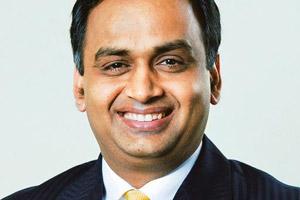The Reserve Bank of India (RBI) on Tuesday left its key policy rate as well as banks’ cash reserve ratio (CRR), or the portion of deposits that commercial banks need to keep with it, unchanged in sync with market expectations, but cut the banks’ mandatory investment in government bonds, or the so-called statutory liquidity ratio (SLR), by half a percentage point to 22%. There is no surprise here, too. This is a continuation of what RBI governor Raghuram Rajan had done in June—paring SLR by an equal quantum.
Those who have been clamouring for a rate cut may have to wait for longer.
In the June policy document, RBI had said “if the economy stays on this course, further policy tightening will not be warranted” and “if disinflation, adjusting for base effect, is faster than currently anticipated, it will provide headroom for an easing of the policy stance.” That fuelled the hope of a rate cut sooner than later, particularly against the backdrop of India’s consumer price inflation rising 7.31% in June, a 43-month low, and wholesale price-based inflation slowing to four-month low of 5.43% in June.
Indeed, the moderation in inflation is due to both base effects as well as the steady deceleration excluding food and fuel but the upside still remains in various forms, such as uncertainty over monsoon conditions and its impact on food production, higher oil prices stemming from geo-political concerns and prospects of economic growth even as the supply constraints remain and RBI is not willing to let its guards down.
The policy document says that the upside risks to the target of containing retail inflation within 8% by January 2015 remain and, therefore, it is “appropriate to continue maintaining a vigilant monetary policy stance”. The central bank is committed to bringing down retail inflation to 8% by January 2015 and 6% by January 2016. While 8% retail inflation seems likely in early 2015, if RBI gives up the fight against inflation and prepares the ground for a rate cut, it will not be able to achieve the target by January 2016. So, it remains in “a heightened state of policy preparedness to contain” inflationary risks, virtually ruling out a rate cut this fiscal year and even beyond. To that extent, this policy is certainly less dovish than the RBI’s June policy statement.
The repeat action on the SLR front is to ensure that commercial banks have more resources in their kitty when credit demand picks up in the world’s third-largest economy in terms of purchasing power parity. The credit growth has been a little over 14% in the past two years, and less than half of what we had seen in fiscal years 2006 and 2007 when India’s economy was growing at around 9.5%. The economic growth has dropped to less than 5% in the past few quarters.
Indeed, RBI is relatively bullish on recovery in economic activities. The Bharatiya Janata Party (BJP)-led National Democratic Alliance (NDA) government’s commitment to fiscal consolidation has encouraged the central bank to pare the floor for banks’ bondholding so that they are in a position to support the credit growth as and when it picks up. Factory output gained 4.7% in May, the fastest pace in 19 months, and the HSBC manufacturing Purchasing Managers’ Index (PMI), a survey-based measure of manufacturing activity, rose to 53 in July, a 17-month high, in response to a surge in production backed by new orders.
These data signify that the credit demand may pick up and the RBI is preparing the banking system to meet that. Had it not done so, a Rs.6 trillion gross government borrowing programme in the current fiscal year will crowd out private demand for funds. A half a percentage point cut in SLR will infuse around Rs.40,000 crore in the banking system. The average holding of government bonds by the banking system is over 28% of their deposits.
There is one more reason behind the SLR cut. In accordance with the Basel III framework on liquidity standards, Indian banks will be required to maintain the minimum liquidity coverage ratio, or LCR, in a phased manner, starting at 60% from January 2015. By January 2019, the banking sector will be required to keep 100%. LCR—or highly liquid assets mostly in the form of government bonds held by banks to meet short-term obligations—is designed to ensure that banks can ride out short-term liquidity disruptions. Since bonds held to meet LCR will be outside the SLR obligation, it is imperative for RBI to bring down the floor for government bond-holding gradually as otherwise after LCR and SLR, the banks will be left with very little money to meet the loan demand of the private sector (See Banker’s Trust on Monday—Monetary policy: RBI may hold rates). The June SLR cut was the beginning of a phased paring of government bondholding of the Indian banking system and my guess is it will come down to around 20% by the end of this fiscal year.


